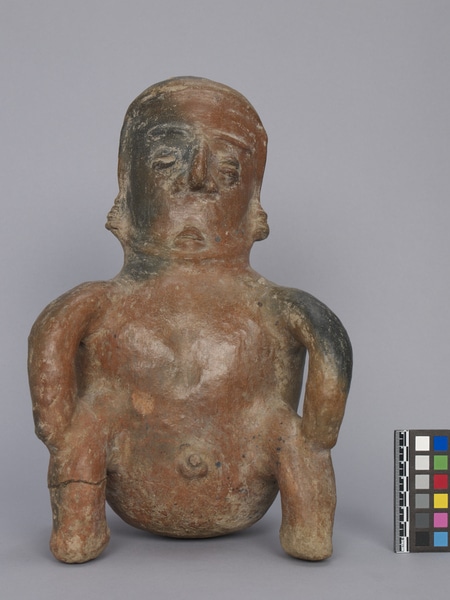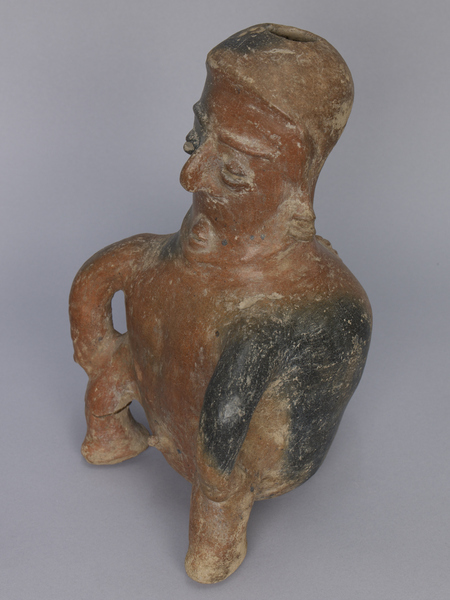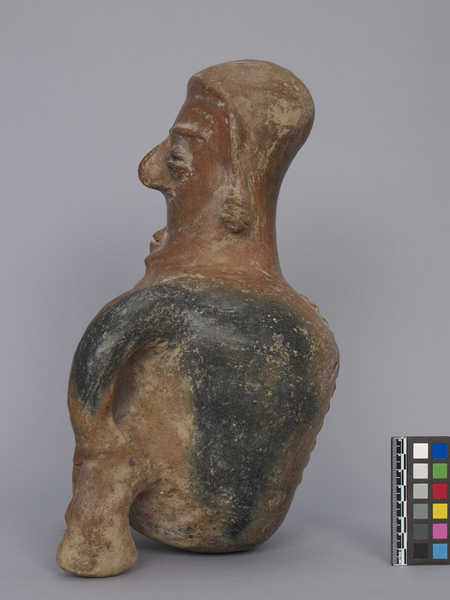Figure Item Number: 2979/5 from the MOA: University of British Columbia





Description
Clay figure of a seated male with a prominent spine. The body is large and bulbous, with bent legs supporting it at front bottom, curved arms resting on knees. A small protuberance between the figure’s knees. The head is long the face having a small mouth near chin, a narrow, protruding nose, and partly closed, rounded eyes. The brows are prominent. Ears are placed low on the head and are carved into several strips. At the back is a well-defined spinal column. The figure is hollow, and a hole is bored through the top of the head and at the back. The right leg has been broken off and glued back on.
History Of Use
These types of hollow, naturalistic redware ceramics have been found in (often elaborate) shaft tombs, a mortuary structure unique to the western Mexican states of Colima, Nayarit and Jalisco. Some experts think the main figure found in such burials may represent a powerful, elite member of the society; other figures may depict retainers sacrificed to accompany that person in the afterlife. Other figures commonly depict warriors, pregnant women, acrobats, male and female couples both seated and standing, and women with children. (The end date of the period is in dispute.)
Item History
- Made in Nayarit, Mexico between 201 BCE and 200
- Collected during 1955
- Owned by Jonathan A. Levin before September 10, 2012
- Received from Jonathan A. Levin (Donor) on September 10, 2012
What
Who
- Culture
- Western Mexico
- Previous Owner
- Jonathan A. Levin
- Received from
- Jonathan A. Levin (Donor)
Where
- Holding Institution
- MOA: University of British Columbia
- Made in
- Nayarit, Mexico
When
- Creation Date
- between 201 BCE and 200
- Collection Date
- during 1955
- Ownership Date
- before September 10, 2012
- Acquisition Date
- on September 10, 2012
Other
- Item Classes
- ceramics
- Condition
- fair
- Accession Number
- 2979/0005